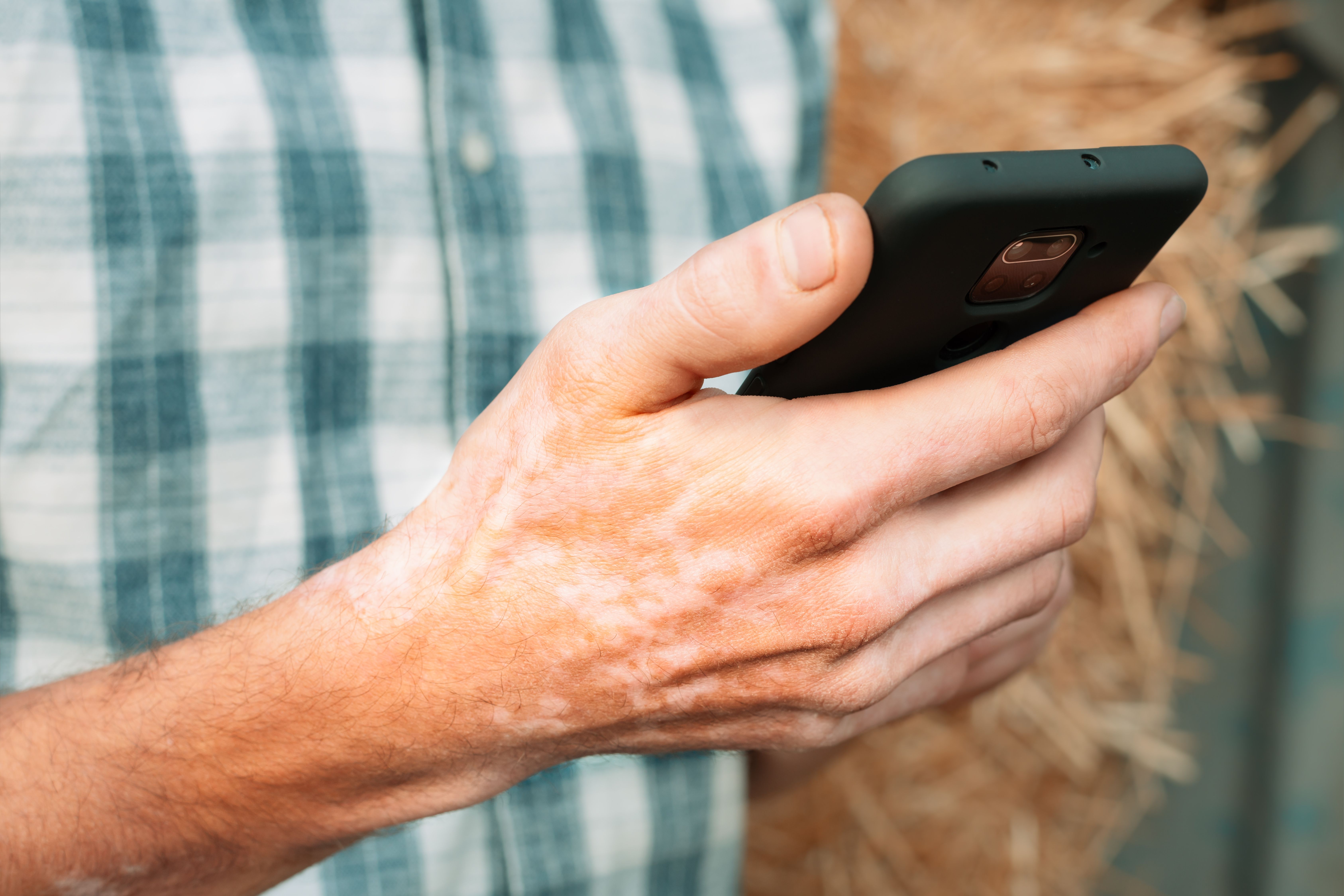- Acne
- Actinic Keratosis
- Aesthetics
- Alopecia
- Atopic Dermatitis
- Buy-and-Bill
- COVID-19
- Case-Based Roundtable
- Chronic Hand Eczema
- Chronic Spontaneous Urticaria
- Drug Watch
- Eczema
- General Dermatology
- Hidradenitis Suppurativa
- Melasma
- NP and PA
- Pediatric Dermatology
- Pigmentary Disorders
- Practice Management
- Precision Medicine and Biologics
- Prurigo Nodularis
- Psoriasis
- Psoriatic Arthritis
- Rare Disease
- Rosacea
- Skin Cancer
- Vitiligo
- Wound Care
News
Article
Further Research Can Confirm Machine Learning’s Accuracy in Detecting Vitiligo
Author(s):
Key Takeaways
- CNNs and ANNs are effective in vitiligo detection, with CNNs achieving up to 99% accuracy, outperforming traditional methods.
- Unsupervised learning methods, such as k-means clustering, struggle with complex skin lesions, showing lower accuracy rates.
Although more evidence is needed, CNNs could potentially be most effective in diagnosing patients with vitiligo.
Image Credit: © SerPhoto - stock.adobe.com

Although more evidence is needed, computer-aided machine learning and deep learning techniques may eventually be used to confirm the diagnosis of vitiligo.1 This first-of-its-kind systemic review determined that convolutional neural network (CNN) and artificial neural network (ANN) algorithms are currently most effective in analyzing and detecting vitiligo, compared to traditional methods.
Researchers obtained literature published between 2005 and 2020 via Science Direct, PubMed, and IEE Xplore. To be eligible, the peer-reviewed literature needed to include comparative photos of the skin along with its quantitative analysis. The authors used search terms such as “computer vision,” “neural network,” “artificial intelligence,” “pattern recognition,” and “machine learning” to identify papers. In forming the research question, investigators used the PICO format below:
- P (population) = patients that have vitiligo skin disease
- I (intervention) = detection with data given in the form of images
- C (comparison) = machine learning algorithms and skin segmentation techniques
- O (outcome) = report accuracies and compare them
After a full-text screening and initial analysis, 244 studies were found, 91% of which came from Science Direct. In total, 10 pieces were included in the final review. Of these, 5 were journals and 5 were conference publications. The included patients ranged from the ages of 18 to 55 years.
CNNs and other supervised deep learning systems showed the greatest performance in vitiligo detection. This is because of their ability to learn hierarchical patterns and features in medical imaging, making them superior to other machine learning methods. In one study, CNNs had a 99% accuracy rate. Similarly, a learning vector quantization (LVQ) neural network had a reporting accuracy of 92%.
Although still effective, other systems like ANNs, Naive Bayes, etc. had lower efficacy compared to CNN-based techniques. For example, one study of ANN reported an accuracy rate of 85.85%.
Unsupervised learning methods, like k-means clustering and KL divergence–based clustering, had difficulty detecting complex skin lesions, compared to their newer counterparts. Furthermore, one literature on k-means clustering observed only a 59% accuracy.
The authors also measured sensitivity and specificity, thus determining a model’s ability to maintain accuracy and avoid false positives. In some studies, newer methods demonstrated rates between 99% and 100%. Older, less advanced models were more prone to false positives.
Dataset sizes ranged from as little as 31 images to as many as 4000 images. It was found that studies with larger datasets had higher accuracy and performance rates. Interestingly, journal articles had higher accuracy rates compared to conference publications. This could be because journal publications are more rigorous in their peer review processes.
The small number of papers included in this analysis may be a possible limitation. Additionally, only literature published in English was utilized, which could impact the generalizability of the findings.
Presently, clinicians refer to visual signs (lesion shape, size, irregularity, etc.) and utilize measurements like the Vitiligo Area Scoring Index (VASI) to diagnose patients and assess the severity of the disease.2
Although these initial results are promising, complete evidence regarding the validity of these computer-aided methods is insufficient. Further research with larger and more diverse datasets is needed to confirm the robustness of these machine learning models.
“There is a need of computer-aided techniques to perform feature extraction and diagnosis of many skin diseases and in this case vitiligo,” the authors wrote. “These computer-aided techniques can eliminate human judgment in case of skin disease to an extent.”
References
1. Tanvir S, Syed SA, Hussain S, Zia R, Rashid M, Zahid H. Detection of Vitiligo Through Machine Learning and Computer-Aided Techniques: A Systematic Review. Biomed Res Int. 2024;2024:3277546. Published 2024 Dec 19. doi:10.1155/bmri/3277546
2. Hamzavi I, Jain H, McLean D, Shapiro J, Zeng H, Lui H. Parametric modeling of narrowband UV-B phototherapy for vitiligo using a novel quantitative tool: the Vitiligo Area Scoring Index. Arch Dermatol. 2004;140(6):677-683. doi:10.1001/archderm.140.6.677
Newsletter
Like what you’re reading? Subscribe to Dermatology Times for weekly updates on therapies, innovations, and real-world practice tips.











